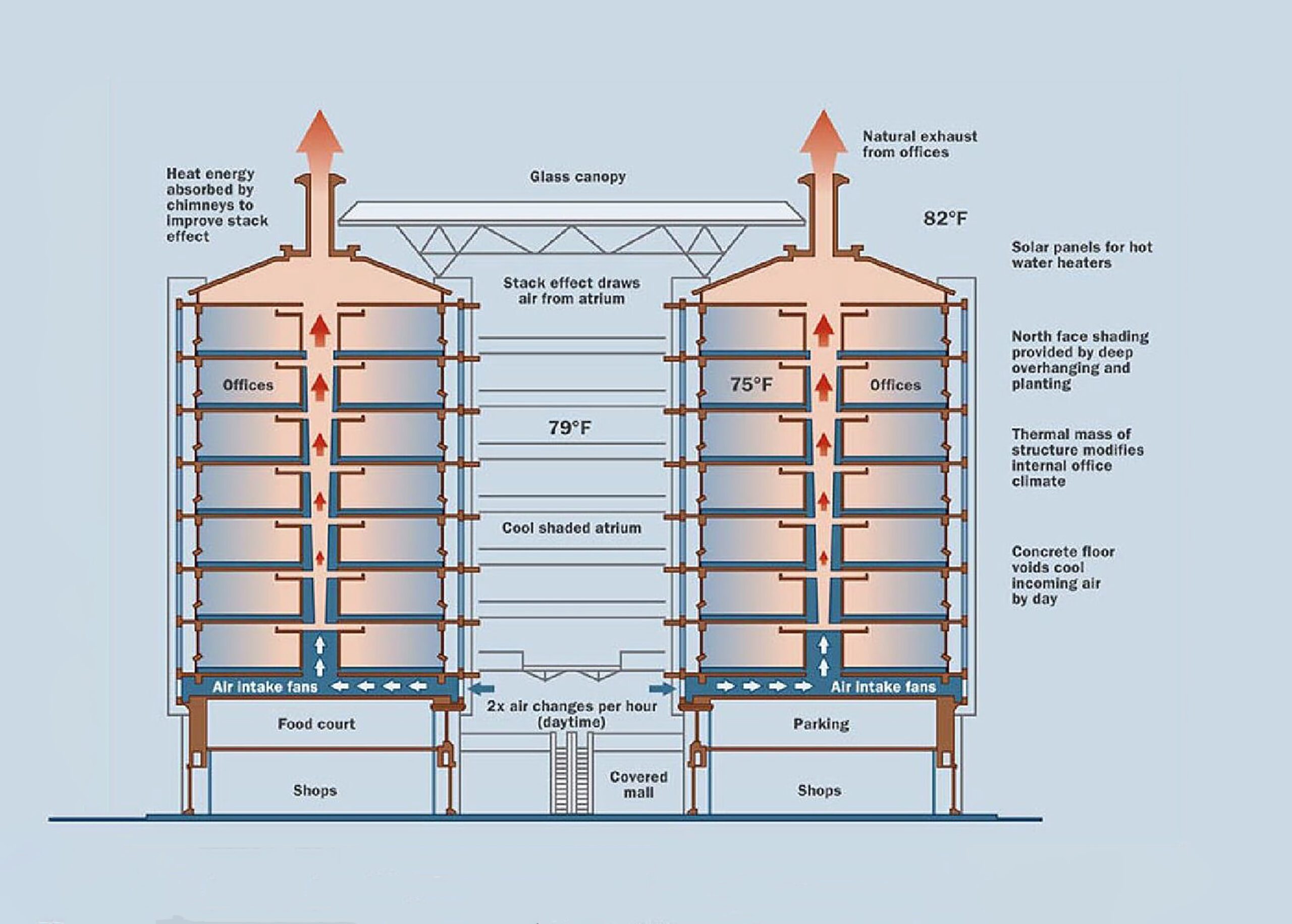
The Eastgate Centre
The Eastgate Centre, situated in Harare, Zimbabwe, is a shopping centre and office block that ingeniously uses natural means for ventilation and cooling. Designed by Mick Pearce, the building draws inspiration from the self-cooling mounds of African termites, showcasing a remarkable example of biomimicry in architecture.

Biomimicry Inspiration
The Eastgate Centre's design is a deliberate move away from the "big glass block". Glass office blocks are typically expensive to maintain at a comfortable temperature, needing substantial heating in the winter and cooling in the summer. They tend to recycle air, in an attempt to keep the expensively conditioned atmosphere inside, leading to high levels of air pollution in the building.
To address these issues, Pearce took an alternative approach. He designed the building to be ventilated and cooled by entirely natural means, probably the first building in the world to use natural cooling to this level of sophistication. The design was inspired by the ventilation of termite mounds.
Termite Mound Ventilation
Termite mounds are constructed like a chimney. The mound warms up in the sun during the day, and by nightfall, the air inside the mound is warmer than outside. As the outdoor temperature falls, warm air naturally vents out the top of the chimney, which draws cool air in through the many underground tunnels and their exits. This is how termites get fresh air into their homes, and keep them at a stable temperature.
The Eastgate Centre's Design
Warm air is drawn up through distinctive brick chimneys on the roof, pulling in cool night air at the bottom. The cool air is captured in underground gaps, and released into the building during the day through networks of pipes and tunnels. This technique avoids the use of air conditioning, using much less energy.
Additional Biomimicry Inspiration
Termites aren’t the only inspiration from nature. The architect, Mick Pearce, also looked at cacti. One of the ways that a cactus can resist high temperatures is that its many wrinkles, ridges, and spikes increase its surface temperature. That makes it easier to disperse its heat at night. The Eastgate building borrows this idea too, with facades broken up by concrete shapes and projections, deep balconies, and plants.
The Eastgate demonstrates how we can draw inspiration from nature to create buildings that are not only aesthetically pleasing but also energy-efficient and environmentally friendly. The success of the Eastgate Centre suggests that biomimicry will continue to play a significant role in the future of sustainable architecture.


